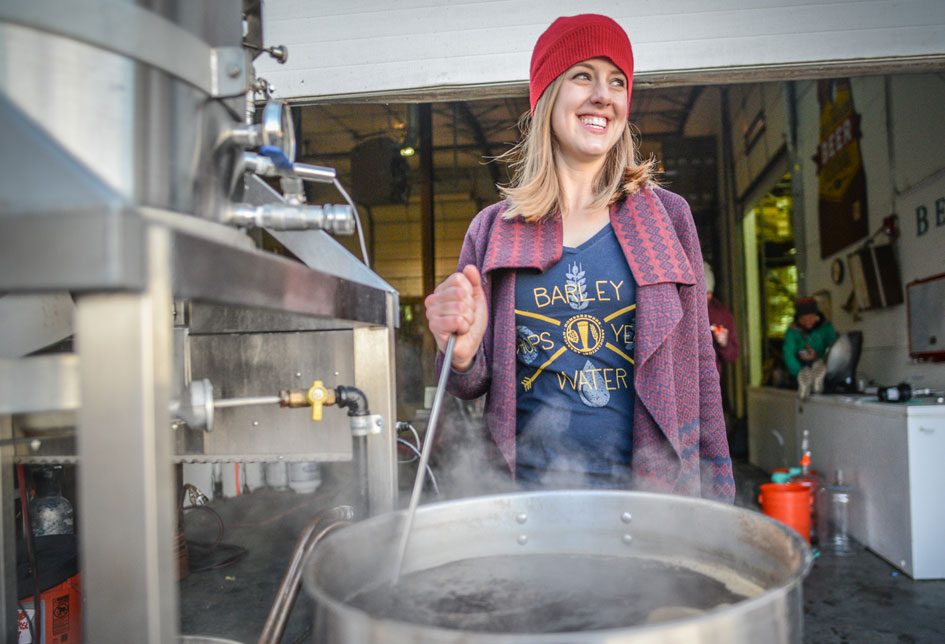
It can be frustrating as an extract brewer to find a great recipe only to see it formulated for all-grain. Luckily, the process of converting all-grain recipes to extract is simple, and we’ll show you how!
All-grain brewers can adopt the same process, but backwards, to determine appropriate amount of base grains in stead of extracts.
1. Identify the Base Malt
Base malt, where nearly all the fermentable sugar in an all-grain recipe is derived, is easily identifiable as a light-colored malt that takes up a vast majority of the grain bill. The exception would be wheat or rye beers which can sometimes use equal parts pale and wheat/rye as the base malts. Pale, 2-row, Maris Otter, Pilsner, wheat, rye, 6-row are all common base malts that you’ll likely run into.
Luckily, there are malt extract versions for nearly all types of base malts. If you are having trouble identifying the correct substitute, post on the AHA Forum or talk to the staff at your local homebrew shop (Find a Homebrew Shop).
2. Convert Base Malt to Extract
You’ll likely notice a percent of efficiency listed on the all-grain recipe being converted. This percentage is how much of the potential sugars are extracted during the mash. A brewer who consistently hits 75% efficiency will extract more sugars and ultimately have a higher original gravity than a brewer with 65% efficiency while mashing the same amount of grains. Because of this, it is important to note the recipe’s efficiency when converting as it effects the amount of extract needed.
Liquid malt extract weighs more than dry malt extract, so there are different conversion rates for each. Based on the all-grain recipes assumed efficiency and the type of extract you prefer, use the following table from Ray Daniels’ Designing Great Beers to determine how much dry or liquid malt extract is needed per pound of base malt. It’s that easy!
| Type: | Assumed Mash Efficiency: | 65% | 70% | 75% | 80% |
| Liquid Malt Extract | 0.63 | 0.68 | 0.73 | 0.78 | |
| Dry Malt Extract | 0.52 | 0.56 | 0.60 | 0.64 |
*Note: Quantities are in pound of malt extract per pound of grain replaced
For example, assume the recipe being converted is calculated for 75% efficiency and has 10 lb 2-row malt. If using liquid malt extract (LME) you would substitute 0.73 lb LME for every pound of 2-row, which means you’d need 7.3 lb LME (10 lb x 0.73 = 7.3 lb LME). If using dry malt extract (DME) you would substitute 0.6 lb DME for every pound of 2-row, which means you’d need 6.0 lb DME (10 lb x 0.60 = 6.0 lb DME).
3. Accommodate All Specialty Grains
Specialty grains are easily utilized by extract brewers to add more color and flavor variations. While you’re heating up the boil water, turn off the heat around 160-170°F and steep the specialty grains in a muslin bag for about half an hour. Then, simply pull the grain bag out, and return to heating the water for the boil. Just before the boil, stir in the extract and go about business as usual.
Learn the entire malt extract brewing with specialty grain process if you aren’t well versed.
Converting to Grains
Converting malt extract recipes to base malt is the same process, but in reverse! You still need to identify your mash efficiency, which will determine the variable to use based on the chart above. Simply divide the weight of the extract by the appropriate variable, and this will give you the amount of base grain needed to reach the same target original gravity.
If you are converting all-extract recipes, keep in mind that you may need to consider using specialty grains if substituting for things like amber malt extract.
Source: Designing Great Beers by Ray Daniels



Share Post